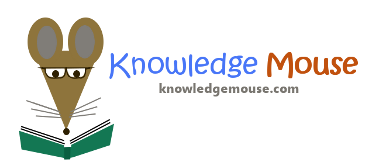
Edit this quiz |
Create your own quiz |
Back to quiz sheets
Quiz Yourself Online With These Questions | Try Out the QuizGame Android App
Create an Embedded / Hosted Online Quiz With These Questions
Quiz Yourself Online With These Questions | Try Out the QuizGame Android App
Create an Embedded / Hosted Online Quiz With These Questions
When you're ready to print, just click this button: Make Print-Friendly
ELEMENTS OF LITERATURE VOCABULARY
-
a work that uses irony and humor to make a point about a political or cultural situationA. satire B. allegory C. humor D. flashback E. dramatic irony
-
a figure of speech comparing two unlike things without the use of the words like or asA. plot B. parody C. setting D. metaphor E. situational irony
-
a conclusion that can be drawn, logically, from given informationA. situational irony B. theme C. tone D. plot E. inference
-
a creative work that copies aspects of a well-known work for comic effectA. sarcasm B. parody C. fiction D. dramatic irony E. connotation
-
a complex metaphor that can extend through an entire story, novel, or poemA. antagonist B. problem C. allegory D. sarcasm E. verbal irony
-
a character says one thing, but everyone knows that he means the oppositeA. situational irony B. dramatic irony C. verbal irony D. inference E. denotation
-
a common, extreme, mocking form of verbal irony in which what is said is opposite of what is meantA. symbol B. irony C. metaphor D. humor E. sarcasm
-
the literal meaning of a word or phraseA. denotation B. connotation C. metaphor D. irony E. inference
-
a deeper idea that holds the story together. Common themes include love, greed, revenge, growing up (coming of age), and overcoming fear.A. theme B. tone C. irony D. sarcasm E. mood
-
emotional tension arising when words or situations are not what they seemA. irony B. problem C. satire D. conflict E. antagonist
-
uses of language that go beyond literal meanings. Similes, metaphors, personification, and hyperbole are figures of speech.A. dramatic irony B. parody C. figures of speech D. satire E. simile
-
the attitude a piece of writing expresses toward its subject.A. hyperbole B. tone C. sarcasm D. problem E. irony
-
the character’s actions have an unexpected outcome, often the opposite of what was intended.A. figures of speech B. sarcasm C. situational irony D. conflict E. antagonist
-
a sentence or passage hinting about events that will occur later in the storyA. flashback B. theme C. symbol D. foreshadowing E. humor
-
the action in a story. It is usually generated by a conflict between a hero who wants something and a person or force opposing him.A. problem B. mood C. theme D. plot E. tone

ELEMENTS OF LITERATURE VOCABULARY (Answer Key)
-
a work that uses irony and humor to make a point about a political or cultural situationA. satire B. allegory C. humor D. flashback E. dramatic irony
-
a figure of speech comparing two unlike things without the use of the words like or asA. plot B. parody C. setting D. metaphor E. situational irony
-
a conclusion that can be drawn, logically, from given informationA. situational irony B. theme C. tone D. plot E. inference
-
a creative work that copies aspects of a well-known work for comic effectA. sarcasm B. parody C. fiction D. dramatic irony E. connotation
-
a complex metaphor that can extend through an entire story, novel, or poemA. antagonist B. problem C. allegory D. sarcasm E. verbal irony
-
a character says one thing, but everyone knows that he means the oppositeA. situational irony B. dramatic irony C. verbal irony D. inference E. denotation
-
a common, extreme, mocking form of verbal irony in which what is said is opposite of what is meantA. symbol B. irony C. metaphor D. humor E. sarcasm
-
the literal meaning of a word or phraseA. denotation B. connotation C. metaphor D. irony E. inference
-
a deeper idea that holds the story together. Common themes include love, greed, revenge, growing up (coming of age), and overcoming fear.A. theme B. tone C. irony D. sarcasm E. mood
-
emotional tension arising when words or situations are not what they seemA. irony B. problem C. satire D. conflict E. antagonist
-
uses of language that go beyond literal meanings. Similes, metaphors, personification, and hyperbole are figures of speech.A. dramatic irony B. parody C. figures of speech D. satire E. simile
-
the attitude a piece of writing expresses toward its subject.A. hyperbole B. tone C. sarcasm D. problem E. irony
-
the character’s actions have an unexpected outcome, often the opposite of what was intended.A. figures of speech B. sarcasm C. situational irony D. conflict E. antagonist
-
a sentence or passage hinting about events that will occur later in the storyA. flashback B. theme C. symbol D. foreshadowing E. humor
-
the action in a story. It is usually generated by a conflict between a hero who wants something and a person or force opposing him.A. problem B. mood C. theme D. plot E. tone

When you're ready to print, just click this button: Make Print-Friendly
